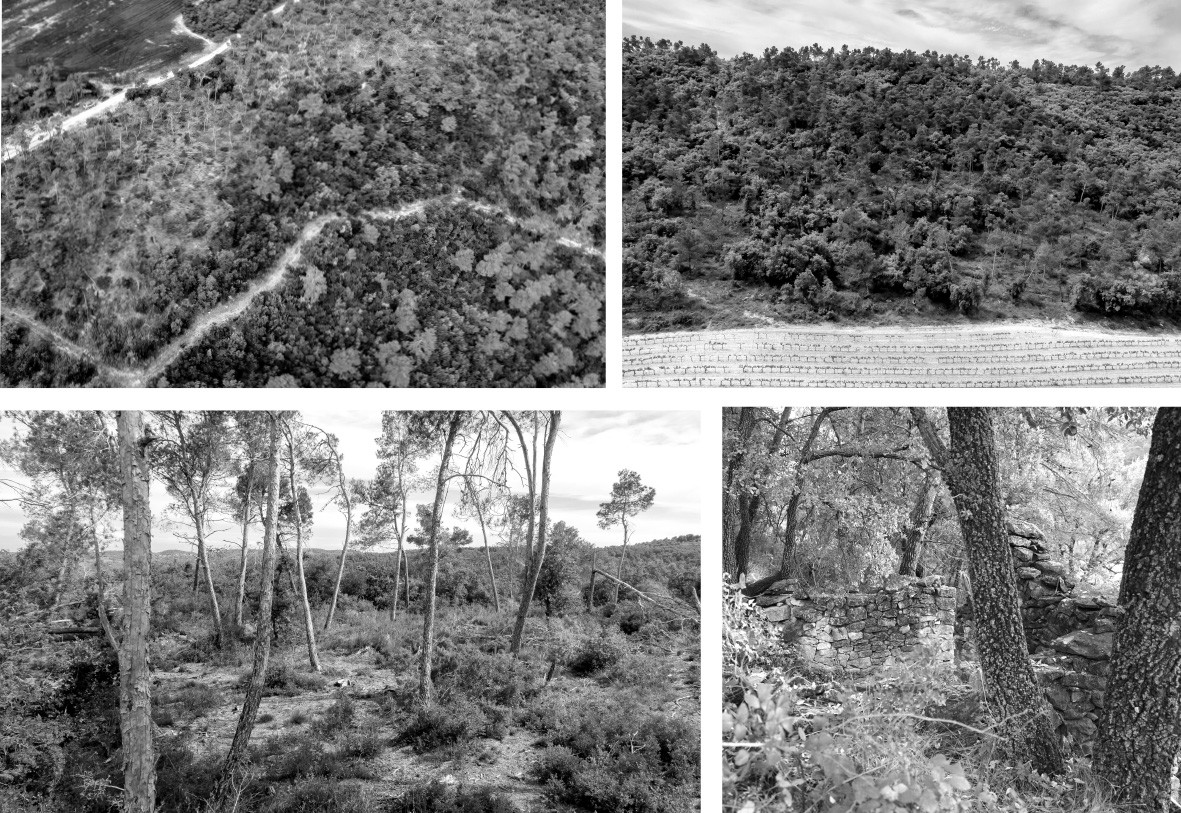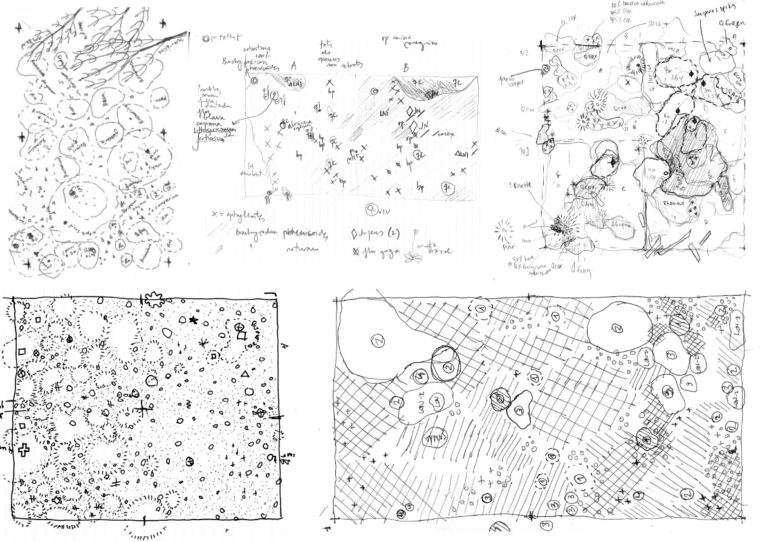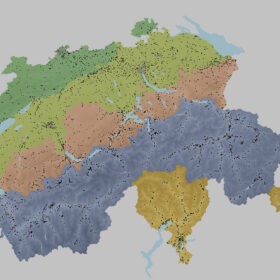
Looking at the fields of wheat and orchards of almond blossoms around Senan, Spain, «crisis» is not the first word that comes to mind. The valleys appear tranquil and unchanging. However, like most rural landscapes in Spain, the area has transformed dramatically in the past decades.
A walk in the seemingly ancient forest reveals stone walls identical to the ones supporting the terraced fields in the valleys. They testify to the maximum extent of cultivation, which reaches far into today’s forest. As it became economically viable to farm only the flattest and largest fields in the valley bottoms, the upper fields were abandoned. The exploitation of the remaining fields has intensified through the help of modern agricultural technologies.
Though not apparent to the naked eye, below the surface a slow-moving crisis is unfolding. In Senan, drought, a nutrient-poor substrate and conventional agricultural practices that maximize yield combine to create a very poor soil. If soil is «a placenta, a living organism which is larger than the life it supports…», the soils degradation means the whole community suffers. In Matters of Care, Maria Puig de la Bellacasa encourages us to imagine «Soil Time» – how considering long-term processes of soil building forces us to work outside of a mindset that prioritizes productivity and urgency. Focusing on the living system of soil, the rhizosphere, shifts our attention from the product to the relations of production.
Building Soil
This project attempts to improve soil health through the adaptive management of a series of field sites around Senan. Through the design of a system of rotational grazing, pasture cropping and water harvesting, the project explores the potential to create novel dynamic landscapes rooted in the climate, geology and culture of a particular place while improving soil health and sequestering carbon. Horses will spend a day intensively grazing small plots of land at defined intervals, which stimulates a response in the vegetation. Their dung returns nutrients to the soil, and over time, the delicate management of the plots will transform the character and composition of the soil and vegetation. Over the ten-year duration of the project the management practices will evolve to respond to site-specific successional dynamics, the needs of the horses and the observed responses in the soil.
The project started with a site visit to Senan last month to discover and document the existing character of the test sites before the arrival of the horses. The sites are all on marginal land that was once cultivated but, due to slope or access constraints, is not deemed suitable for modern agricultural production. The resulting successional forest shows different species compositions depending on aspect, geology and history of management. Since the existing conditions are the basis for future transformation, these field notes document the species distribution on each site as a record of the present and road map for the future.

Bonnie-Kate Walker, Cara Turett and Luke Harris are landscape designers and research associates at the Chair of Being Alive, Institute of Landscape and Urban Studies (LUS) ETH Zürich. They teach in the Masters of Science in Landscape Architecture and are founding members of the collective Office of Living Things.
